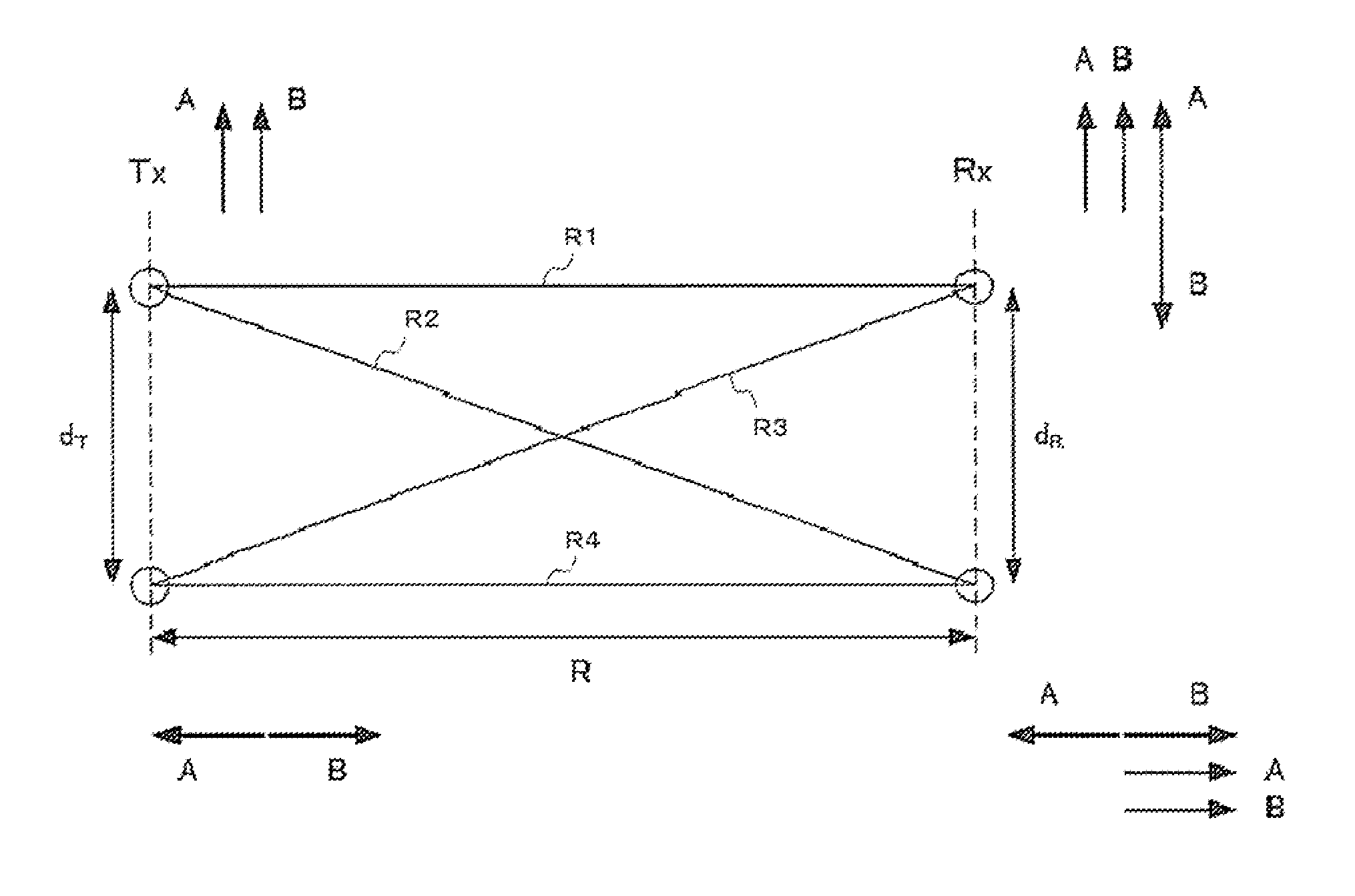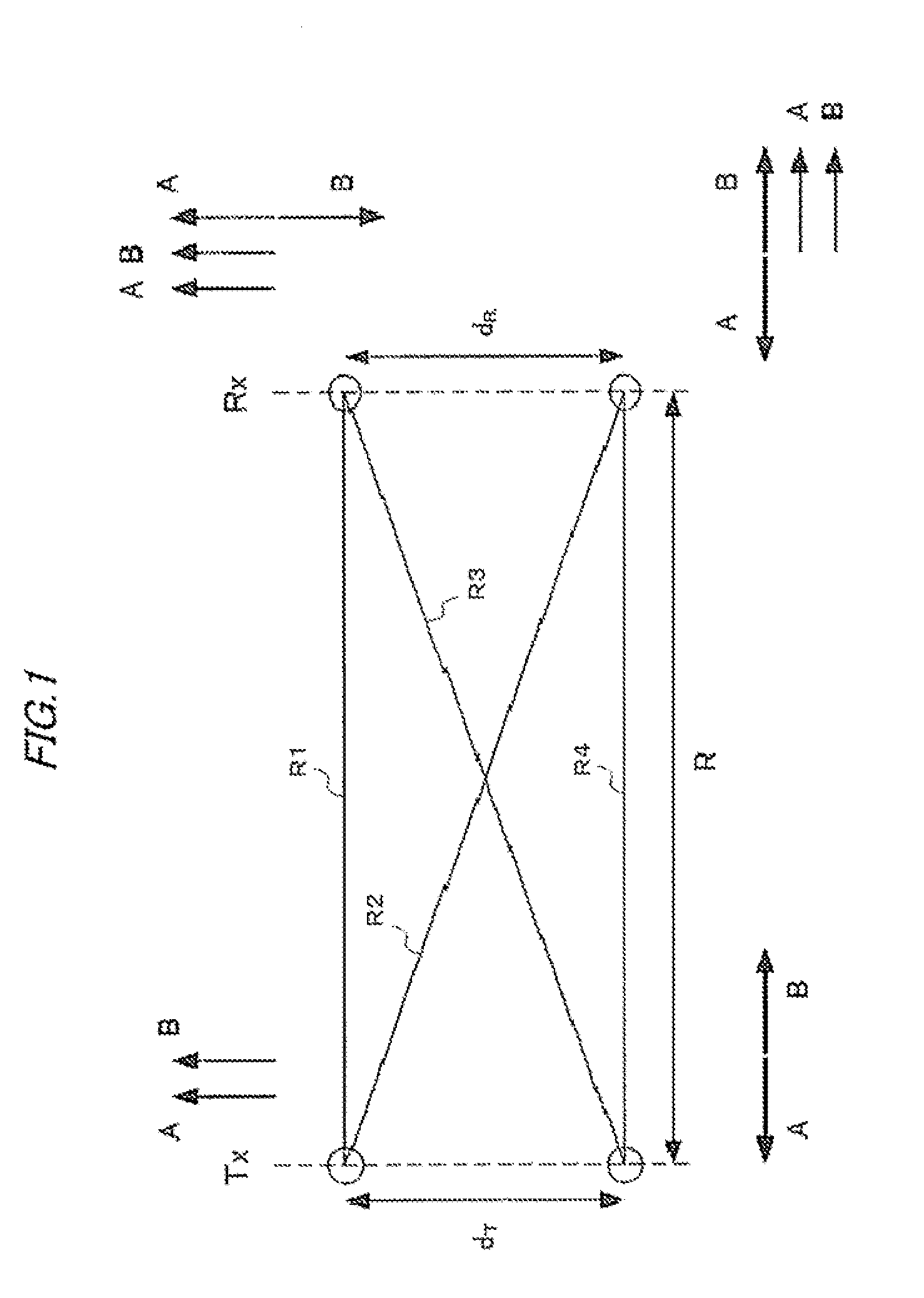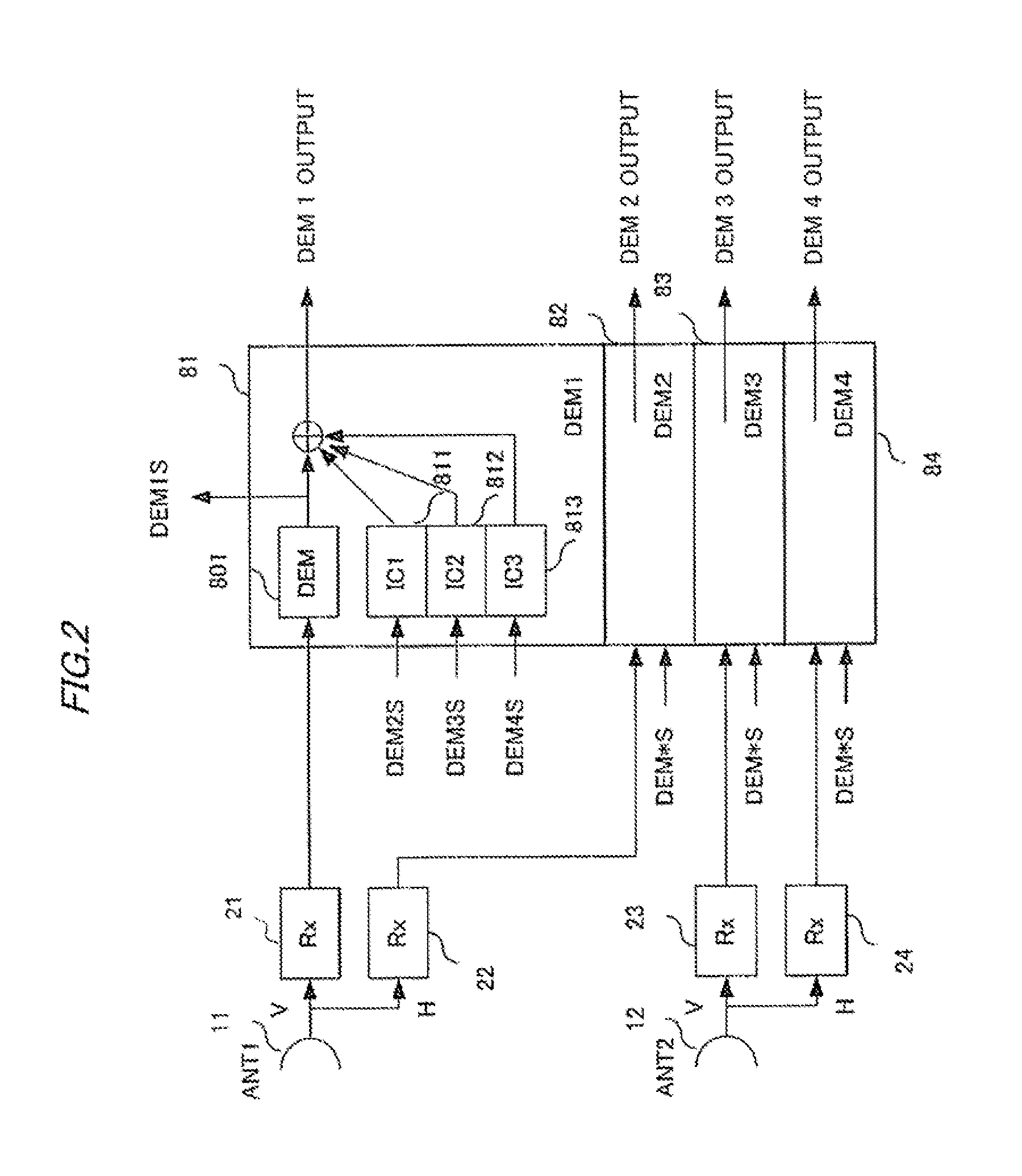Wireless communication system, receiver, transmitter, wireless communication method, receiving method, and transmitting method
a wireless communication and wireless communication technology, applied in the field of wireless communication systems, can solve the problems of reducing system gain, increasing device power consumption, and reducing system gain, so as to achieve accurate demodulation of signals and simple circuit configuration
- Summary
- Abstract
- Description
- Claims
- Application Information
AI Technical Summary
Benefits of technology
Problems solved by technology
Method used
Image
Examples
example 1
[0080]Initially, the configuration and operation of the transmitting side (transmitting station, transmitting set, transmitting apparatus, or transmitting section) and the receiving side (receiving station, receiving set, receiving apparatus, or receiving section) of a communication system according to example 1 of the present invention will be described separately. As for the configuration related to MIMO signal processing, both the transmitting side and the receiving side are based on configuration example 4 that is shown in FIG. 5 of PTL 1 (where the unitary matrix of the communication channel matrix H is calculated on the receiving side; independent local oscillators for respective antennas are used both on the transmitting side and the receiving side).
[0081][Configuration of Transmitting Side]
[0082]FIG. 3 shows an example of configuration of the transmitting side of the communication system according to example 1.
[0083]The communication system shown in FIG. 3 includes the follo...
example 2
[0151]Next, a communication system according to example 2 of the present invention will be described with reference to FIGS. 9 and 10.
[0152]As can be seen from FIGS. 6 and 8 above, the MIMO signal processing and the XPIC signal processing both are linear operations. That is, the same result is obtained regardless of which is processed first. In the configuration of the receiving side of example 2, the XPICs are arranged prior to the MIMO signal processing circuits in an order inverse to example 1.
[0153]FIG. 9 shows an example of configuration of the receiving side of the communication system according to example 2.
[0154]The receiving side of the communication system shown in FIG. 9 are almost the same components as in FIG. 4. Detailed description thereof will thus be omitted. As shown in FIG. 9, first and second antennas 11 and 12 are connected with receivers 21 to 24 for V-polarized signals and H-polarized signals, on the output side of which respective four interference canceling ...
example 3
[0167]FIG. 11 shows the configuration of the transmitting side (transmitting section) of a wireless communication system according to example 3 of the present invention. In the example of FIG. 11, the configuration of the transmitting side of the wireless communication system according to example 1 shown in FIG. 3 is applied to the transmitting side of configuration examples 1 and 2 described in PTL 1 (where the unitary matrix of the communication channel matrix His calculated on the transmitting side).
[0168]As with the configuration of FIG. 3 (example 1) seen above, the wireless communication system shown in FIG. 11 is a MIMO system (line-of-sight communication system) that has two transmitting antennas 13a and 13b on the transmitting side and two receiving antennas 11a and 11b on the receiving side, and forms mutually orthogonal fixed transmission channels between the transmitting side and the receiving side.
[0169]In FIG. 11, dT represents the installation distance (element distan...
PUM
 Login to View More
Login to View More Abstract
Description
Claims
Application Information
 Login to View More
Login to View More - R&D
- Intellectual Property
- Life Sciences
- Materials
- Tech Scout
- Unparalleled Data Quality
- Higher Quality Content
- 60% Fewer Hallucinations
Browse by: Latest US Patents, China's latest patents, Technical Efficacy Thesaurus, Application Domain, Technology Topic, Popular Technical Reports.
© 2025 PatSnap. All rights reserved.Legal|Privacy policy|Modern Slavery Act Transparency Statement|Sitemap|About US| Contact US: help@patsnap.com



